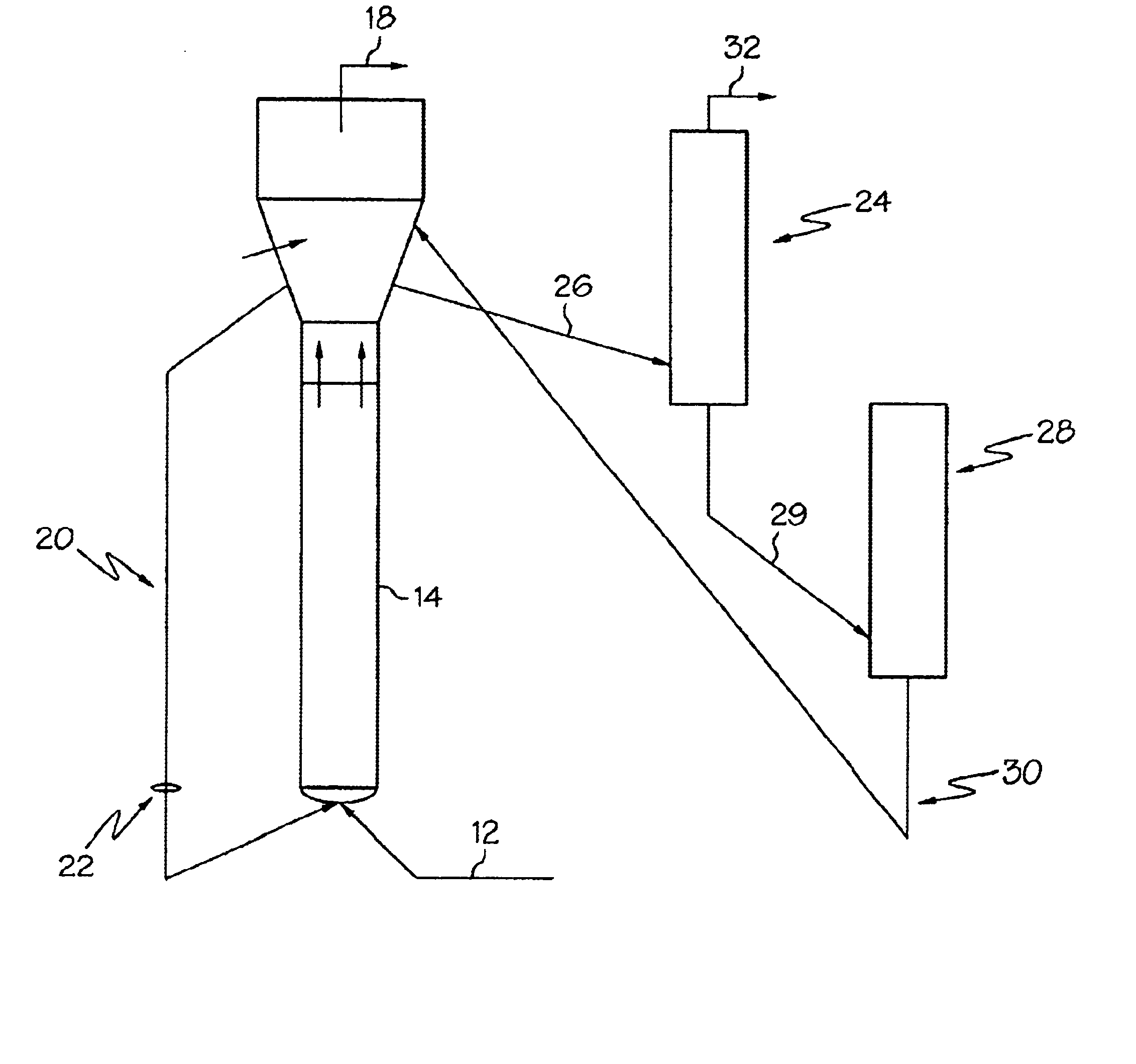Process to control conversion of C4+ and heavier stream to lighter products in oxygenate conversion reactions
a technology of oxygenate conversion reaction and process, which is applied in the direction of catalyst regeneration/reactivation, hydrocarbon oil treatment products, physical/chemical process catalysts, etc., can solve the problems of high cost, time-consuming and labor-intensive replacement of deactivated catalysts, and limited opportunities to produce low-cost light olefins from petroleum feeds. achieve the effect of increasing the production of light olefins
- Summary
- Abstract
- Description
- Claims
- Application Information
AI Technical Summary
Benefits of technology
Problems solved by technology
Method used
Image
Examples
example 1
A 0.055 g sample of SAPO-34 catalyst that had previously been calcined in air at 550° C. for 16 hours was placed between two quartz wool plugs in a 4 mm diameter quartz reactor tube. The tube was then inserted into an electrically heated zone which was directly linked to a gas chromatograph for on-line analyses of products. The pressure inside of the reactor tube was maintained at 16.5 psig by using a back-pressure regulator. The temperature was maintained at 450±2° C. Helium was used as a carrier gas at a flow rate of 60 ml / min. One milliliter (ml) gas samples of ethylene (C2=) were injected successively at 30 minute intervals onto the catalyst. The products in the effluent were directed to a gas chromatographic column for analyses. The ethylene conversion was calculated by subtracting from 100% all of the detected gas phase hydrocarbon products other than ethylene feed itself. Selectivities to the products of interest are shown in Table I. Coke yield was not determined.
example 2
The procedure described in EXAMPLE 1 was repeated except that one milliliter (ml) gas samples of propylene (C3=) were used as feed. The propylene conversion was calculated by subtracting from 100% all of the detected gas phase hydrocarbon products other than propylene feed itself. Selectivities to the products of interest are shown in Table I. Coke yield was not determined.
example 3
The procedure described in EXAMPLE 1 was repeated except that one milliliter (ml) gas samples of 1-butene (1-n-C4=) were used as feed. The butene-1 conversion was calculated by subtracting from 100% all of the detected gas phase hydrocarbon products other than butene-1 feed and other butene isomers. Selectivities to the products of interest are shown in Table I. Coke yield was not determined.
PUM
| Property | Measurement | Unit |
|---|---|---|
| wt. % | aaaaa | aaaaa |
| wt. % | aaaaa | aaaaa |
| wt. % | aaaaa | aaaaa |
Abstract
Description
Claims
Application Information
 Login to View More
Login to View More - R&D
- Intellectual Property
- Life Sciences
- Materials
- Tech Scout
- Unparalleled Data Quality
- Higher Quality Content
- 60% Fewer Hallucinations
Browse by: Latest US Patents, China's latest patents, Technical Efficacy Thesaurus, Application Domain, Technology Topic, Popular Technical Reports.
© 2025 PatSnap. All rights reserved.Legal|Privacy policy|Modern Slavery Act Transparency Statement|Sitemap|About US| Contact US: help@patsnap.com


